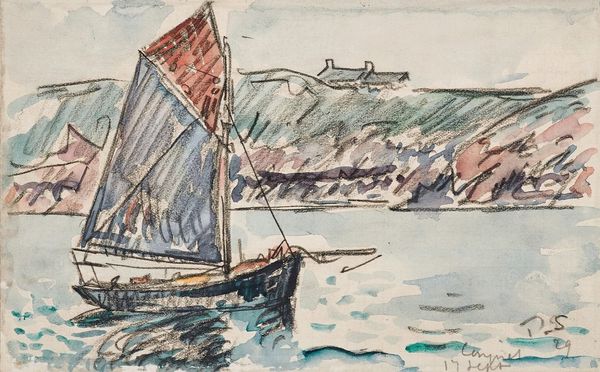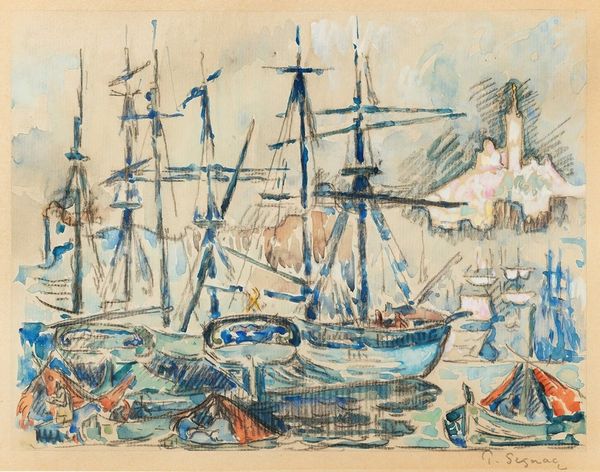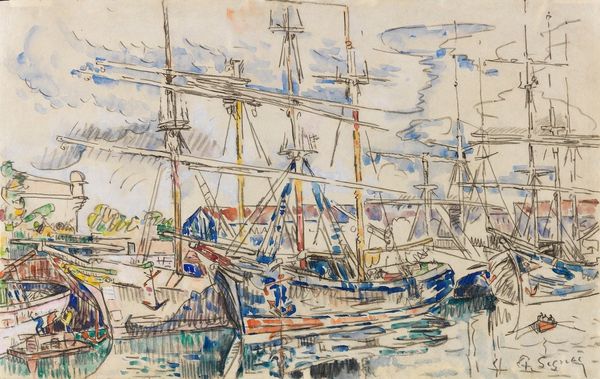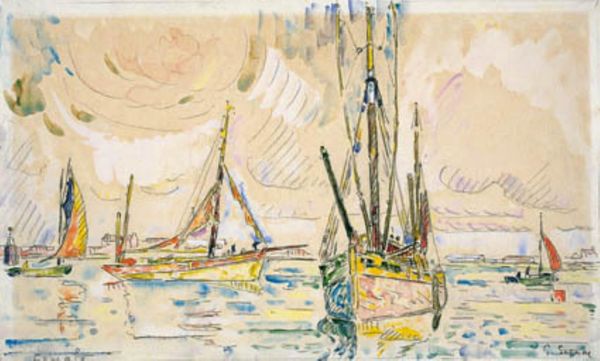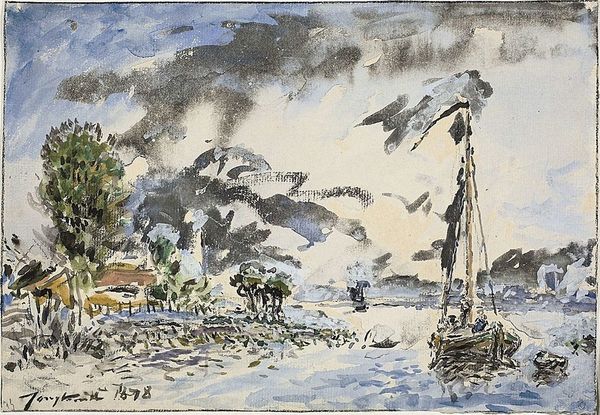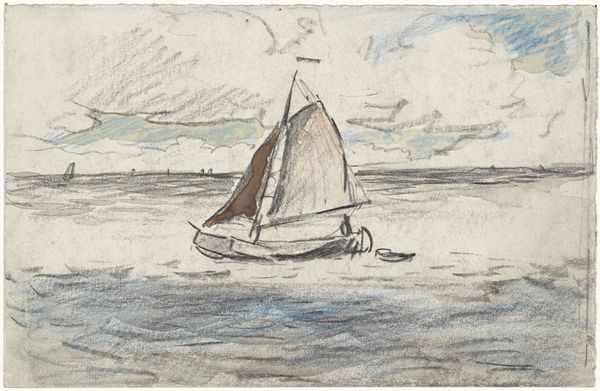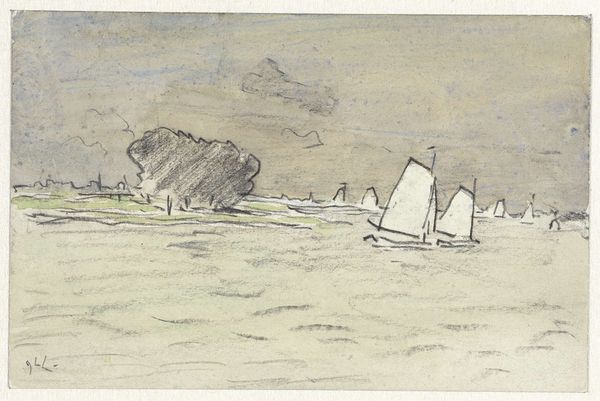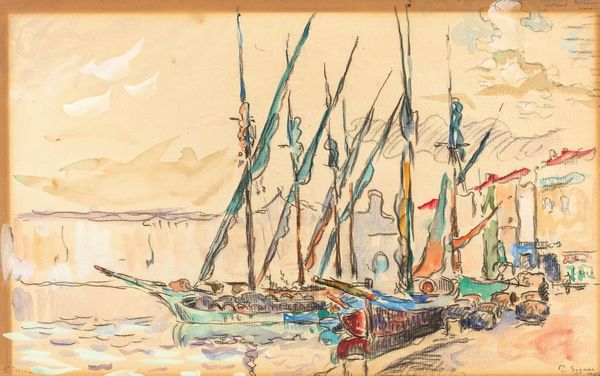
Copyright: Public Domain: Artvee
Curator: We're now looking at "Ships near the Trieux River," a watercolor created by Paul Signac in 1925. The scene captures boats in a tranquil harbor. What strikes you when you first view this artwork? Editor: Initially, I'm captivated by its light touch. The watercolor medium lends a certain ephemeral quality. The color palette is muted, almost dreamlike, yet the touches of bold color are so compelling. There's a balance that makes it seem very calm. Curator: That’s an insightful observation. Signac, known for his role in the Pointillist movement, transitioned here to a more fluid, expressive style while remaining faithful to depicting contemporary life, moving from urban scenes in Paris to smaller towns like this one, offering insights into the development of a regional French identity. It marks a significant shift in his oeuvre, signaling a growing interest in the nuances of local culture and environment. Editor: It feels like a departure. We still see his attention to the division of color, but now in this softer form. How do you think his aesthetic choices serve particular agendas of his time, especially considering the post-war era? Curator: I find it especially revealing that he chose this scene. Consider this town after the first world war: depicting maritime spaces was so much more than depicting recreation, right? This work displays the slow return to normalcy, which is in contrast to much more radical aesthetics developing around that period. His works helped to construct and support the image of France that still remains as a popular vision today. Editor: Absolutely. Signac isn’t just capturing a scene. It is actively participating in defining the national image for the world. So this is about creating an appeal by using impressionist tropes of leisurely daily life—how does that impact different segments of French society? Whose perspective is not represented here? Curator: That's crucial to acknowledge, the perspectives omitted contribute significantly to understanding the image and what it means to look at. Editor: What a striking view on how to reconsider these historical works of art. Thank you for contextualizing that with me. Curator: It’s always important to think about. I learned from you just now, as well!
Comments
No comments
Be the first to comment and join the conversation on the ultimate creative platform.

